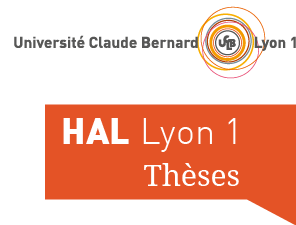Photo-electrochemical cells for green H2 production : a contribution to scaling up studies
Cellules photo-électrochimiques pour la production d'H2 vert : une contribution aux études de mise à l'échelle
Résumé
This PhD project focuses on the comparative study of two types of solar fuel generators: a PEC cell based on a bismuth vanadate (BiVO4) photoanode, and an integrated photoelectrochemical (IPEC) cell combining a solar cell with an electrolyser. Both devices achieve the artificial photosynthesis process of capturing solar energy and storing it in chemical bonds. The goal of the work is to identify the limiting parameters that hinder the large-scale deployment of these photoelectrochemical devices and to propose solutions in order to facilitate research in this field. Two specific scientific questions are at the heart of this research: 1. What is the impact of heterogeneities, inherent to large-scale preparation processes, on the performance of photoactive materials? 2. What role can integration play in transferring performance from the laboratory to the pilot scale? To answer the first question, an experimental parametric study was undertaken on BiVO4 photoanodes, considered as photoactive semiconductors representative for artificial photosynthesis. In parallel, in order to answer to the second question, an IPEC cell, the combination of a PK/Si tandem solar cell with a proton exchange membrane electrolyser, was realized, tested and optimized. In a second phase, this approach was followed by the design of a monolithic module, integrating 9 IPEC cells. The realization of 5 of these modules enabled the assembly of the EASI Fuel device (European Autonomous Solar Integrated fuel station) for the continuous conversion of H2 (produced under sunlight by the IPEC cells) and CO2 into CH4 within a methanogenesis Archaea-based bioreactor. Thanks to this innovative coupling, the EASI Fuel device was selected and successfully tested for 72 hours of continuous operation in total autonomy, during the final of the Horizon Prize - Fuel from the Sun: Artificial Photosynthesis competition, which took place at the end of the 2nd year of the thesis.
Mon projet de thèse porte sur l'étude comparative de deux concepts de générateurs de carburant solaire : une cellule PEC basée sur une photoanode de vanadate de bismuth (BiVO4), et une cellule intégrée (IPEC) combinant une cellule solaire à un cellule d’électrolyse. Les deux dispositifs réalisent le processus de photosynthèse artificielle consistant à capturer l'énergie solaire et à la stocker dans les liaisons chimiques. L’objectif de mes travaux est d'identifier les verrous au déploiement à grande échelle de ces dispositifs photo-électrochimiques et de proposer des solutions pour les lever. Deux questions scientifiques sont en particulier au cœur de mes travaux de recherche: 1. Quel est l’impact des hétérogénéités, inhérentes aux procédés d’élaboration à grande échelle des matériaux photo-actifs, sur leurs performances ? 2. Quel rôle peut jouer l’intégration dans la transposition, à l’échelle pilote, des performances obtenues en laboratoire ? Pour répondre à la 1ère question j’ai mis en place une étude paramétrique expérimentale sur des photo-anodes à base de BiVO4, un matériau modèle pour la photosynthèse artificielle. En parallèle, afin de répondre à la 2ème question, j’ai réalisé et testé une cellule IPEC : la combinaison d'une cellule solaire tandem PK/Si et d'un électrolyseur à membrane échangeuse de protons. Dans une deuxième étape, cette démarche a été poursuivie par la conception d’un module monolithique original, intégrant 9 cellules IPEC. La réalisation de 5 de ces modules a permis l’assemblage du démonstrateur EASI Fuel (European Autonomous Solar Integrated fuel station) pour la conversion continue d’hydrogène (produit sous ensoleillement par les IPEC) et du CO2, en CH4 au sein d’un bioréacteur de méthanation. Grace à ce couplage innovant, le prototype EASI Fuel a été sélectionné et testé avec succès pendant 72h en continu et en totale autonomie, lors de la finale du concours Horizon Prize - Fuel from the Sun: Artificial Photosynthesis, qui s'est déroulée à la fin du 2ème année de thèse.
| Origine | Version validée par le jury (STAR) |
|---|
